Giving Beekeeping Guidance by cOmputatiOnal-assisted Decision making
Lateral flow device for neonicotinoid contamination screening (instructional video)
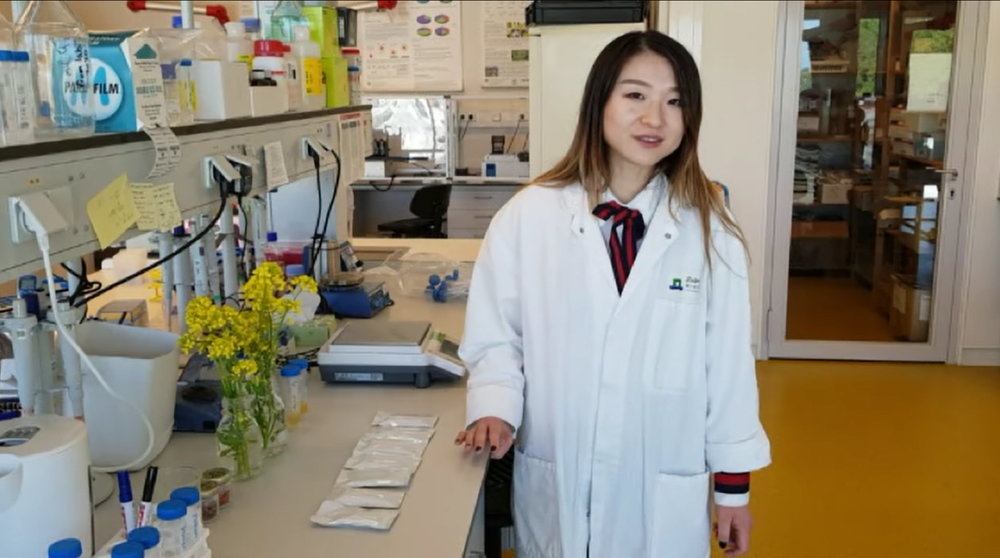
Photo: Mang Xu demonstrating how to use neonicotinoid lateral flow devices
One of the current tasks of Wageningen University and Research within B-GOOD is the development and application of lateral flow devices. Featuring Mang Xu of Wageningen Food Safety Research, this introduction video demonstrates how to use neonicotinoid lateral flow devices (LFDs), which were developed by Zhejiang University and exclusively provided to B-GOOD.
The LFD is a device that allows scientists to test for the presence of different neonicotinoids in various materials (examples in this video are tap water, rapeseed flower, pollen and honey); it is also quite simple and requires minimal sample preparation, making it suitable for on-site neonicotinoid screening.
After unpacking the device, Mang explains its mechanism: each neonicotinoid LFD comes with two channels, for imidacloprid and acetamiprid. When performing the test, two drops of the sample should be applied in each sample-well after which the LFD will develop for 10 minutes. The image below shows the result of testing tap water.
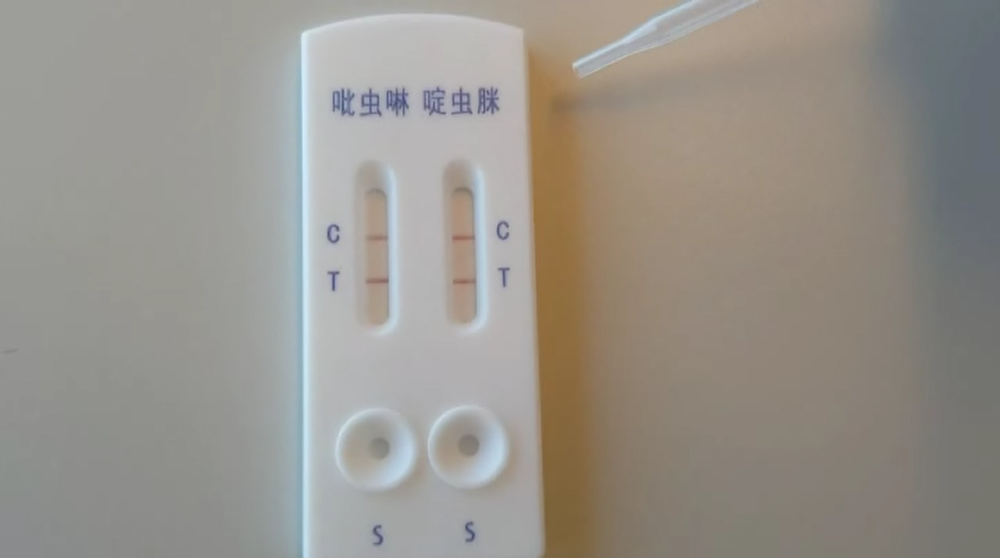
Photo: Mang Xu demonstrating how to use neonicotinoid lateral flow devices ( the result of testing tap water)
As the image shows, both channels display two control and test lines. The presence of the control line means that the test is valid; the presence of the test line means that the water is free of neonicotinoid (if the test line fades or even disappears, neonicotinoid is present in the sample). The following image displays how to interpret the test:
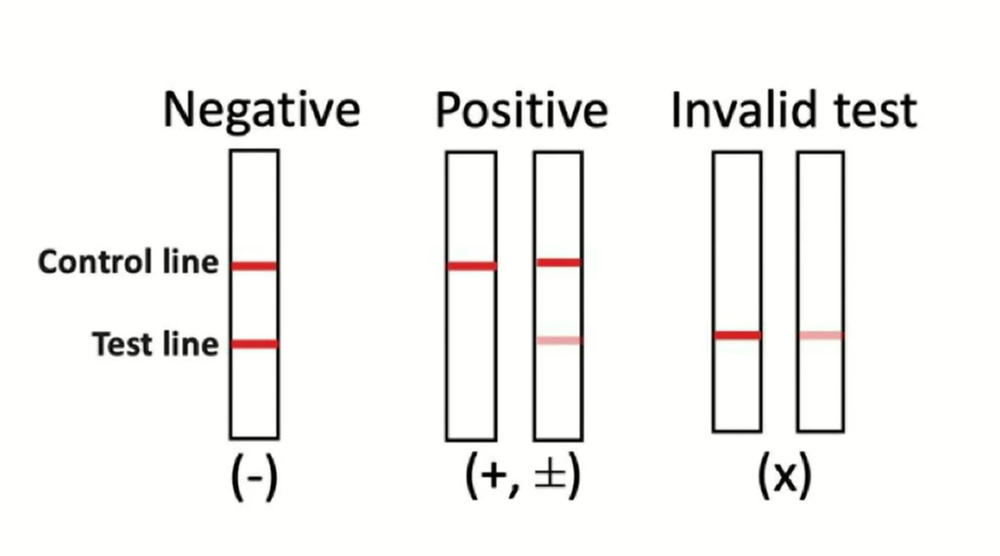
Photo: How to interpret LFD test results
The second test analyzes three other sample matrices relevant for B-GOOD, namely pollen, rapeseed flower and honey. One gram of each material is mixed with 10 milliliter of boiling tap water. In order to avoid damaging the neonicotinoid LFD, the samples are left to cool down until they are room temperature. The image below captures the result of this test:
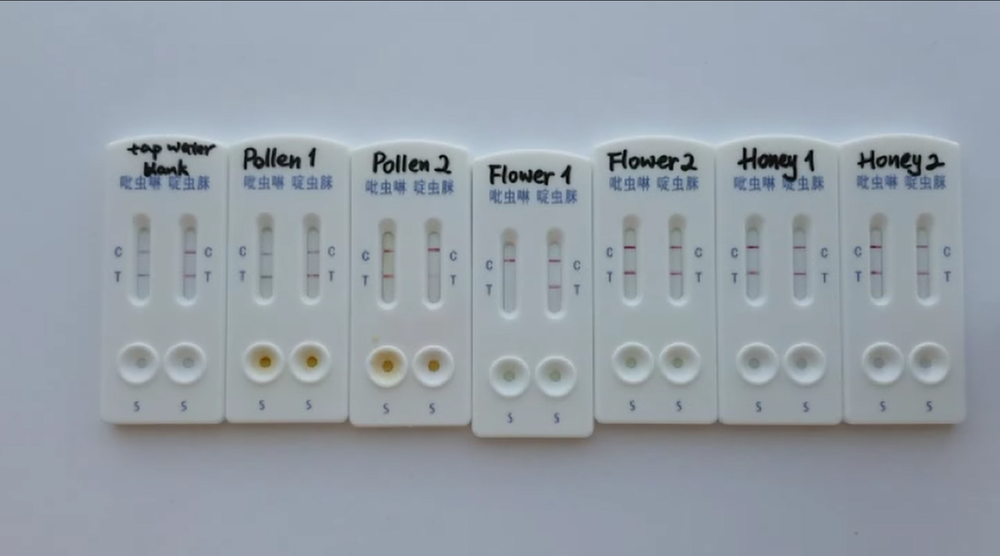
Photo: Test results from the three sample matrices relevant for B-GOOD, namely pollen, rapeseed flower and honey
The faint test line in the second channel of the ‘Pollen 2’ sample means it is positive for acetamiprid. The missing test line in the first channel of the ‘Flower 1’ sample means it is contaminated with imidacloprid. The other samples contain clearly visible control and test lines, meaning they are free from neonicotinoids. Additionally, researchers from Wageningen Food Safety Research have discovered that these LFDs are able to detect six out of eight neonicotinoids (the cross interactions can be seen in the image below).
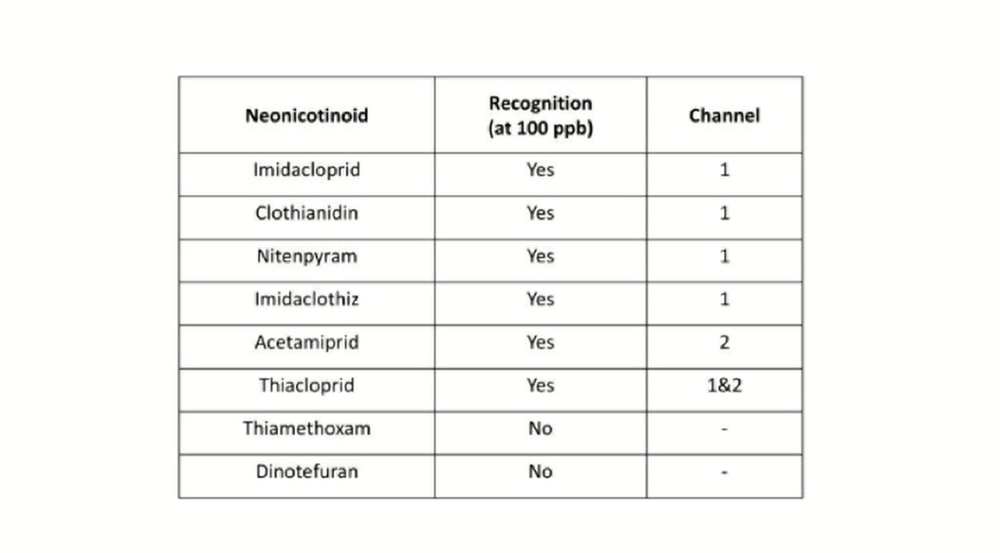
Photo: A list of the neonicotinoids that can be detected by the LFDs
"These lateral flow devices are simple and robust, and they require minimum sample preparation. So they are perfect for outside neonicotinoid screening for bee safety", says Mang Xu. The LFDs will also be tested with bees in the near future.
You can see the full video here.